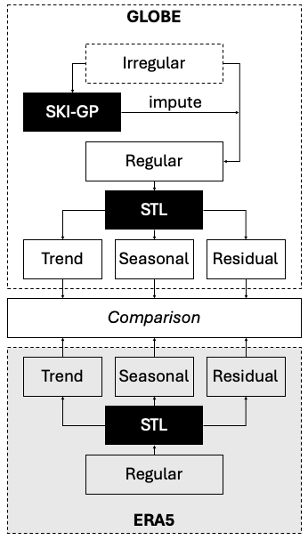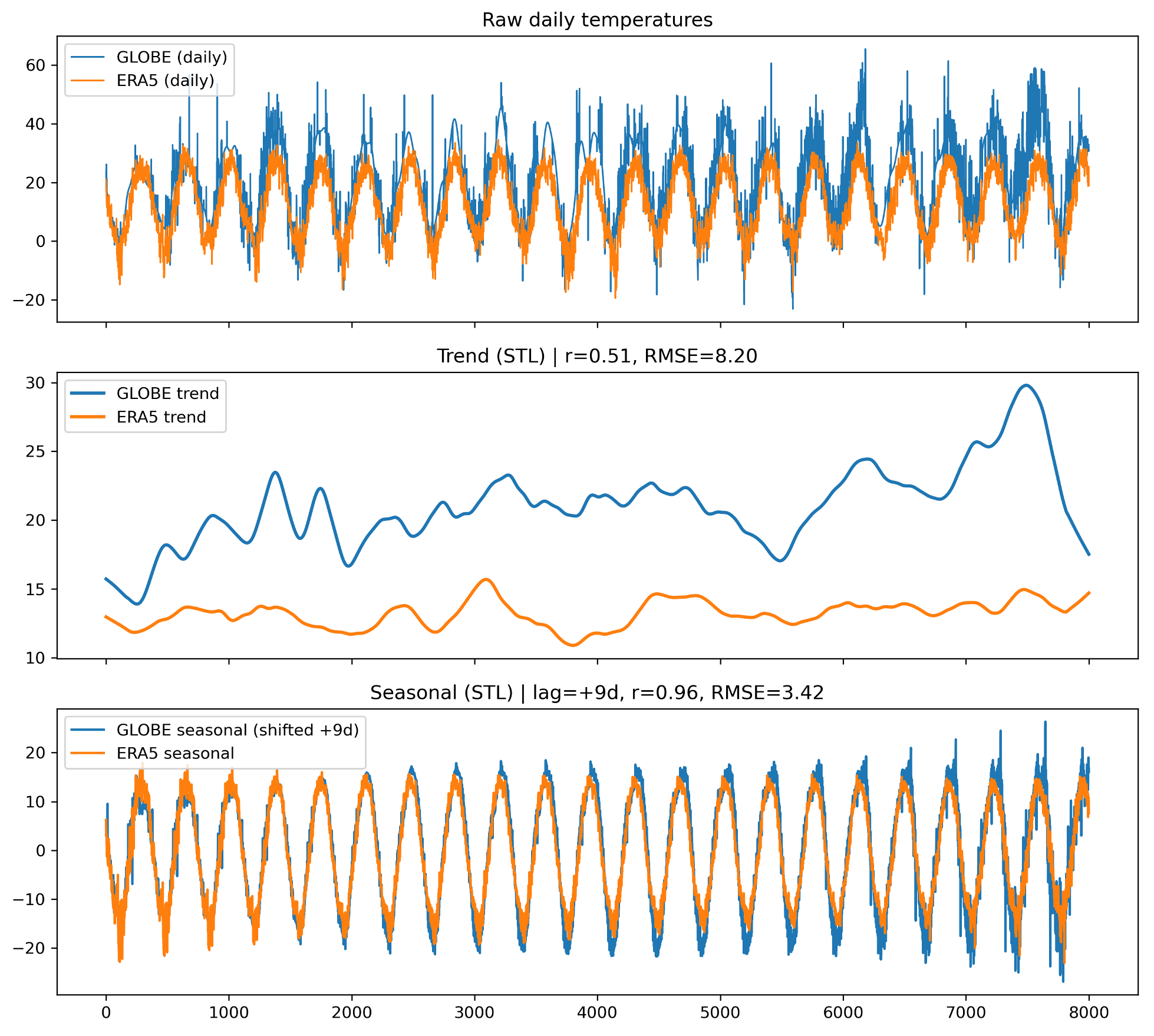
ENVIRONMENTAL CITIZEN SCIENCE
Feb 2025 – Present
Research Associate @ CUNY ASRC (Advanced Science Research Center)
NASA GLOBE (Global Learning and Observations to Benefit the Environment), launched by Al Gore in the 1990s, is a global earth-monitoring citizen science and education program. Over the course of three decades, participants have contributed hundreds of millions of observations through manual in-situ measurements and weather stations. Variables include air and surface temperature (the focus of the figures shown here study), mosquito habitats, soil moisture, and water transparency.
Characteristic of citizen science, GLOBE’s data stream is irregular and noisy, creating challenges to analysis. Investigating these data provides insight into how citizen science can advance environmental understanding and play a role in monitoring a changing world.
The figures below are part of my investigation into GLOBE air and surface temperature data. To assess the spatiotemporal availability of GLOBE temperature data, I grouped observations into cells of equal area then used a custom metric for data quality, Qcell, to score each of the cells. In general, Qcell, which ranges from 0–1 (worst–best) rewards data availability and penalizes inconsistent sampling.
Cells with high Qcell scores were chosen for further analysis along with sites inside those cells with high data outputs. In addition to cells and sites, I analyzed data at the global and country scale. Using these four scales of analysis, I used Structured Interpolation Gaussian Processes (SKI-GP) to model GLOBE temperature time series, imputed model outputs into missing GLOBE values, then ran STL decompositions to compare to an STL-decomposed signal from ERA5-Land, a trusted reanalysis model.
for more info…
Stay tuned for future updates, publications, and NASA GLOBE news!
Check out the NASA GLOBE website below.


